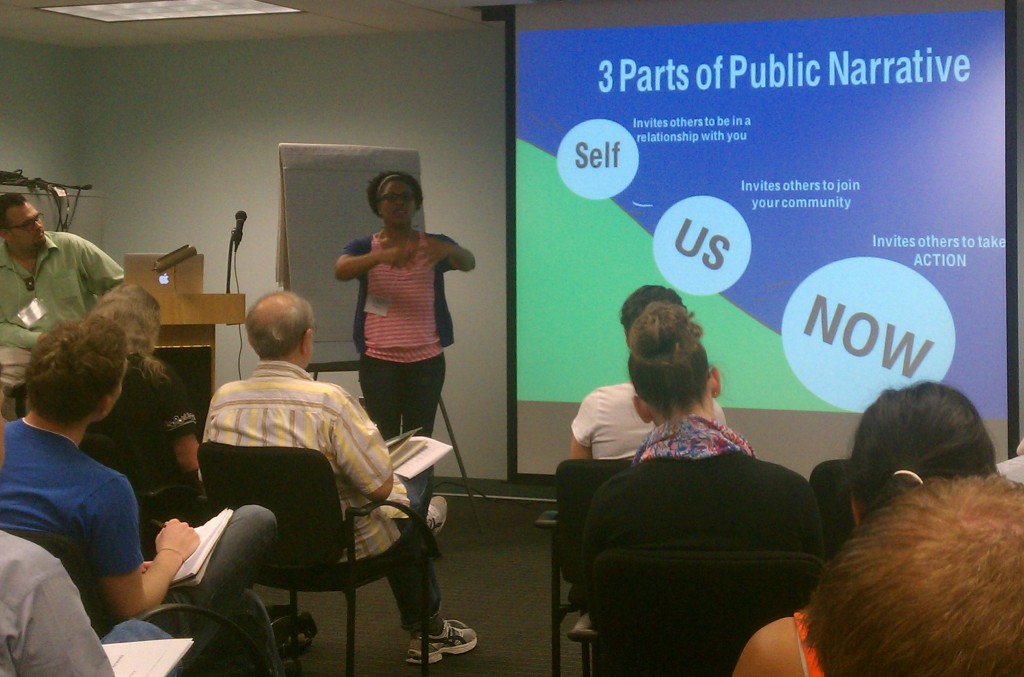How is storytelling used for social change?

Photo Credit: Paul VanDeCarr
Broadly speaking, we can think about the functions of storytelling as being to Learn, Organize, Educate, and Advocate—and thereby effect change in public attitudes, behavior, culture, and policy. These four functions often overlap, and most of the organizations profiled here use storytelling in more than one way.
LEARN: WHAT STORY DOES: Helps communities assess needs and strengths and evaluate a program throughout its life. EXAMPLE: The GlobalGiving storytelling project collects “micro-narratives” from communities in Africa where development projects it supports are based; these mini-stories help the organization assess community needs and evaluate the work of those projects.
ORGANIZE: WHAT STORY DOES: Builds strength and leadership within an organization or movement and serves as a means of exchanging strategies for social change. EXAMPLE: Community organizer and Harvard professor Marshall Ganz developed a story-sharing method called “Public Narrative,” in which members of a group or campaign share their stories of “self,” “us” and “now.” People become more invested in an organization if they have given a part of themselves to it.
EDUCATE: WHAT STORY DOES: Engages a variety of large audiences or publics in civic dialogue and public education. EXAMPLE: The more than 50,000 video testimonials on the It Gets Better Project website provide lifesaving encouragement to LGBT young people, urging them to stay alive and stick around for the good stuff.
ADVOCATE: WHAT STORY DOES: Engages diverse civic actors for large-scale constituency building, fundraising, and policy advocacy. EXAMPLE: The Health Media Initiative of the Open Society Foundations provides storytelling training and production assistance to groups working on issues such as AIDS prevention for sex workers in South Africa and the rights of intellectually disabled people in Moldova.
